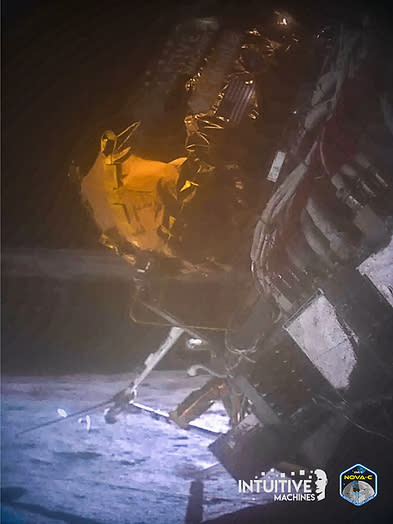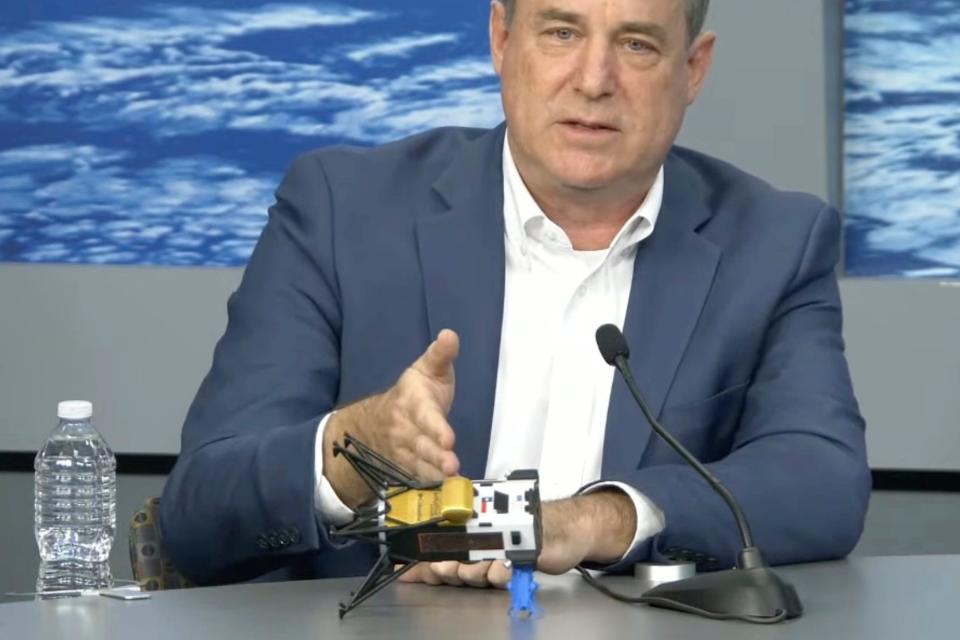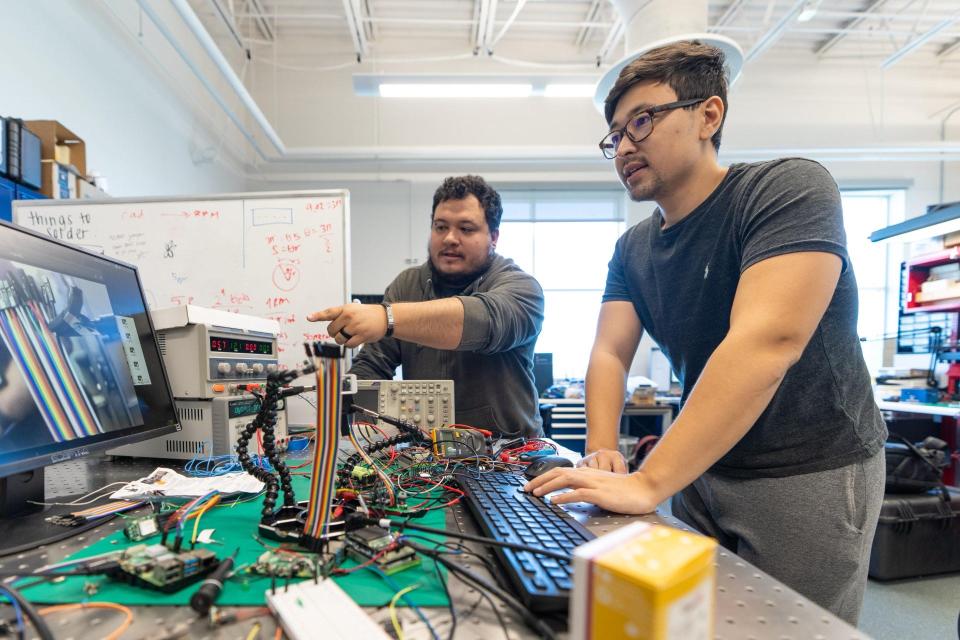Intuitive Machines CEO: EagleCam is 'wild success,' although no photos have been sent yet

EagleCam − the student-built camera designed to withstand a 239,000-mile spaceflight, drop onto the Moon's dusty surface and send pictures back to Earth − was finally ejected Wednesday, but no third-person perspective photos have emerged.
During a news conference Wednesday, officials described a series of challenges that Mission Control faced as Odysseus, the Intuitive Machines lunar lander, descended hard and fast onto the Moon and skidded to a halt, settling tilted at a 30-degree angle.
Embry-Riddle Aeronautical University's EagleCam was supposed to have been deployed a few seconds before reaching the Moon last Thursday so it would be in a position to take the first photos known to man of a spacecraft making an extraterrestrial landing.
"Unfortunately, we couldn’t get to that, with the power descent the way it happened," said Steve Altemus, CEO of Intuitive Machines and an Embry-Riddle alumnus.

EagleCam remained on board, with the hopes that it could later be ejected and produce third-person photos.
"As we went to each payload to try and reactive them, we were able to reactive the EagleCam. We reset the visual processing unit and powered up the EagleCam, and were able to eject it," Altemus said. "It ejected it about 4 meters away from the vehicle safely.
"However, either in the camera or in the wifi signal back to the lander, something might not be working correctly. So, the Embry-Riddle team is working on that and wrestling with that to see if there’s anything they can do," he said.
Altemus called the EagleCam project a "wild success," one that he would like to try again with a future Moon mission.
"Those students put their heart into it and it’s a really innovative design, and if we can get a picture of a landing, I would love to give it to them," he said. "So, we’ll see what happens going forward.”
ERAU officials react: 'Incredible feat'
Embry-Riddle President Barry Butler, in a prepared statement provided to The News-Journal, said the project completely designed and built by students was an "incredible feat" that will serve them well.
"The team has consistently displayed agility, creativity and adaptability and has gained invaluable lessons from this experience. Congratulations to all involved in the historic IM-1 mission," Butler said. "For years to come, our students and graduates will continue to be inspired by the EagleCam team’s determination, perseverance and innovation.”

The team's faculty adviser, Troy Henderson, offered nothing but praise for the 26-student team comprised of undergraduates, graduate students and doctoral candidates. Henderson is an associate professor of aerospace engineering and director of the Space Technologies Laboratory where the EagleCam was built.
"I am incredibly proud of the EagleCam team! They overcame several obstacles in real time with creative engineering solutions. The team worked tirelessly and intensely, and they did an amazing job," Henderson said. "They look forward to applying the insights gained from EagleCam to help support future spaceflight operations.”
Moon Mission: Odysseus lander tipped over on the moon: Here's why NASA says the mission was still a success
No Ejection: Embry-Riddle EagleCam remained on lunar lander and didn't film touchdown on the Moon
This article originally appeared on The Daytona Beach News-Journal: ERAU students' EagleCam ejected onto Moon, but no photos have emerged

